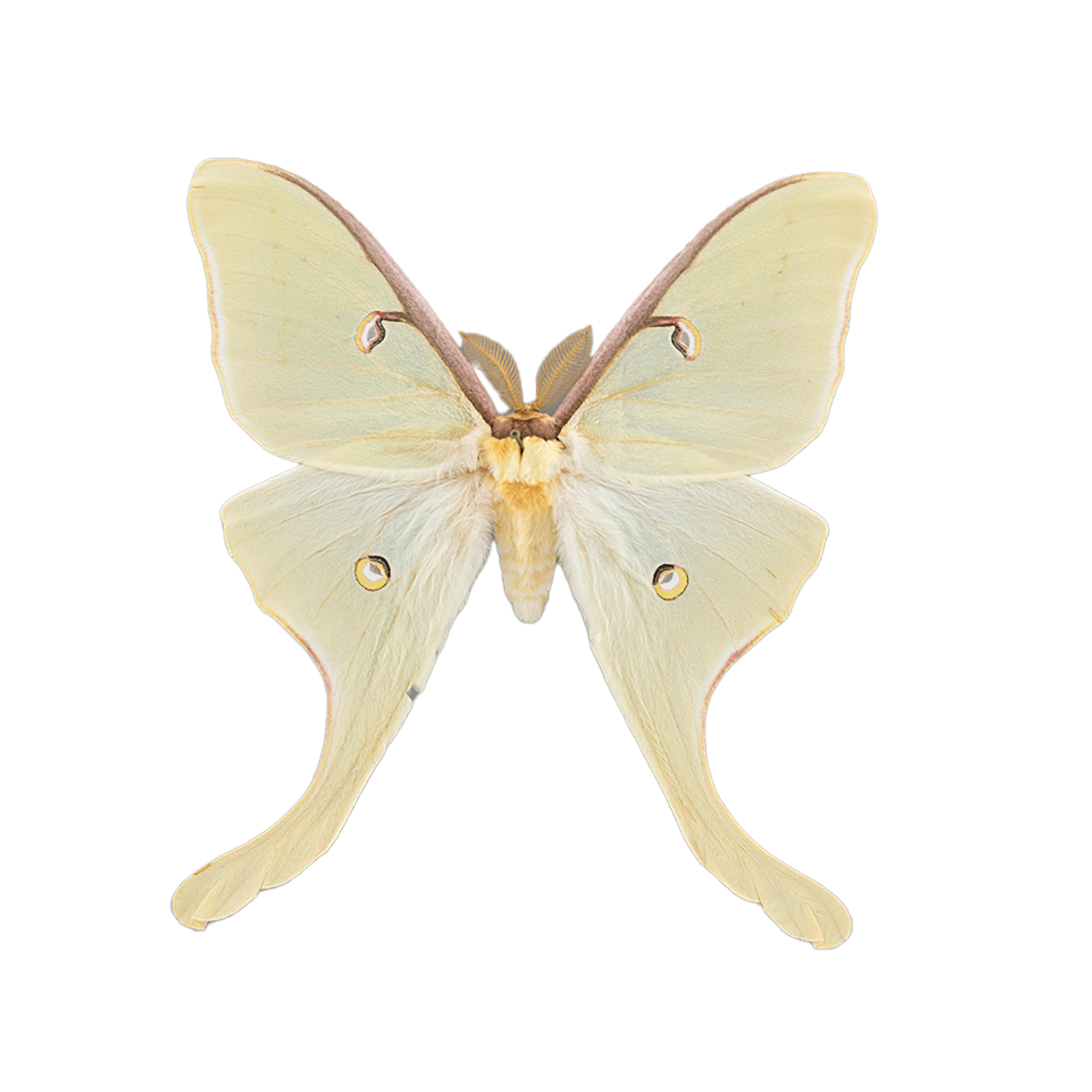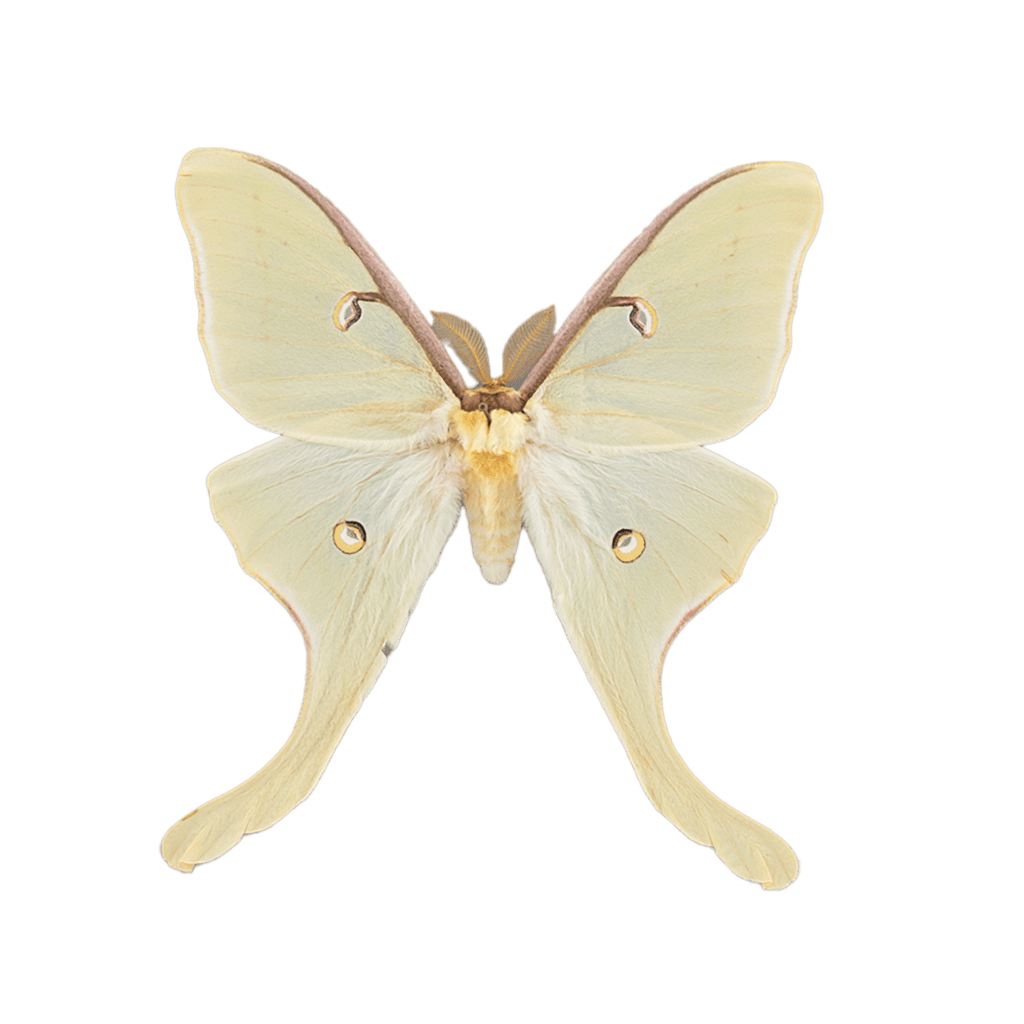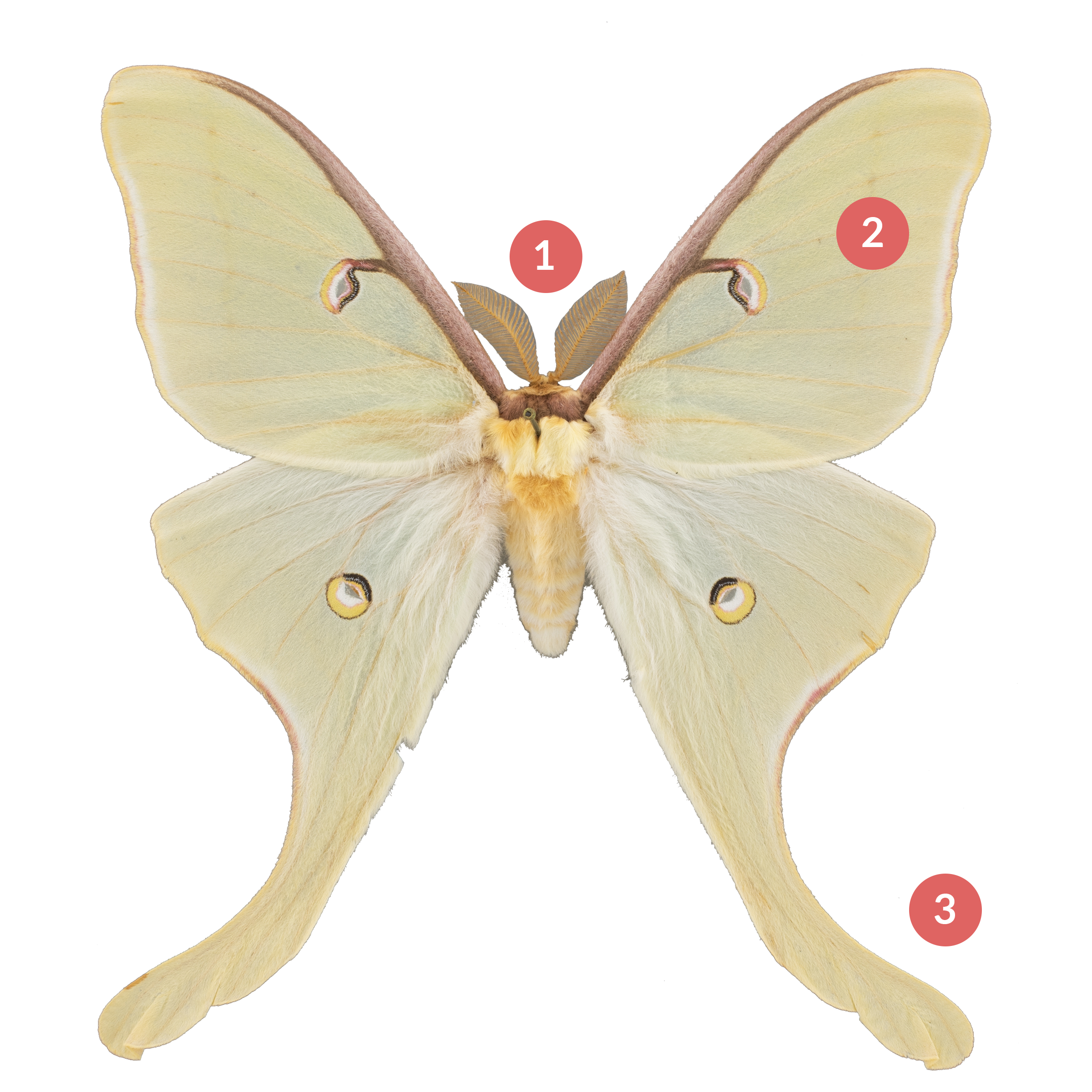About
The Luna Moth (Actias luna) is a captivating and distinctive insect belonging to the family Saturniidae. Renowned for its remarkable beauty, the Luna Moth boasts a wingspan of up to 4.5 inches, making it one of the largest moth species in North America.
Known for its lime green color and long hind wing tails, the Luna Moth can easily be distinguished from any other species in North Ameirca. Its wings exhibit a striking combination of pale green hues, accented by shades of yellow and pale blue, while elongated hindwings and long, curving tails add to its ethereal charm.
The Luna Moth is primarily found in the eastern regions of North America, dwelling in moist and wooded habitats such as forests and gardens. Its short adult lifespan of about one week is devoted solely to reproduction, during which time it relies on stored energy reserves, foregoing any need for sustenance. Unfortunately, the Luna Moth population has faced some decline due to habitat loss and pesticide use, making sightings of these enchanting creatures increasingly rare and cherished.
Deciduous woodlands, suburbs with large trees


